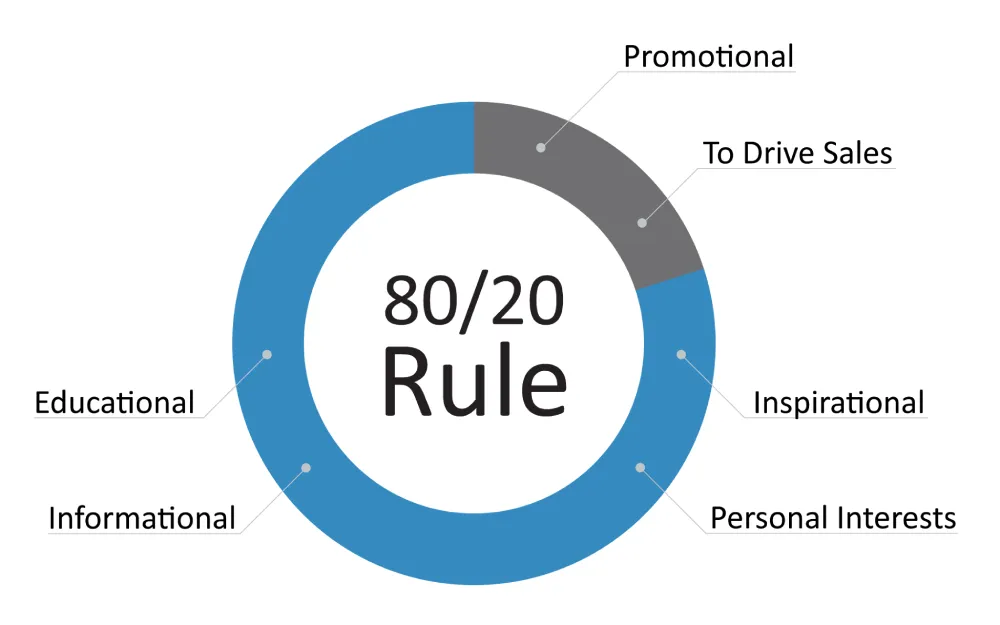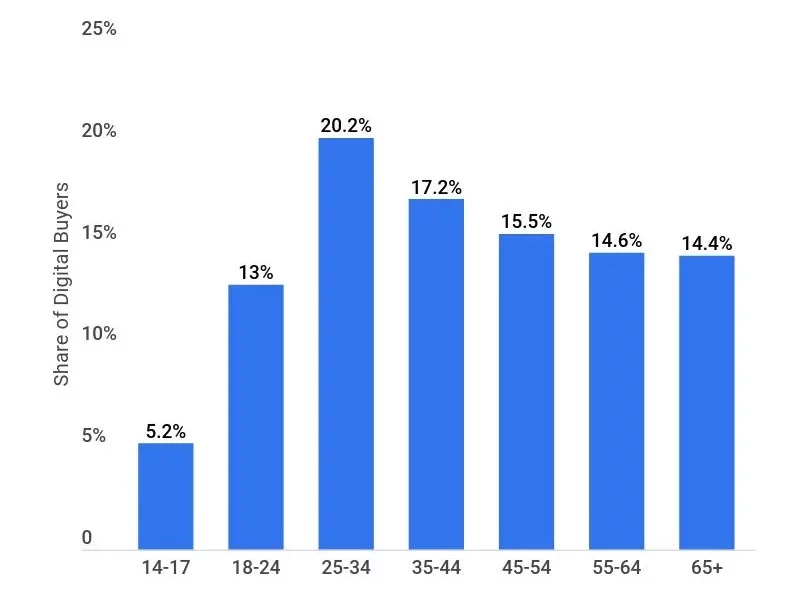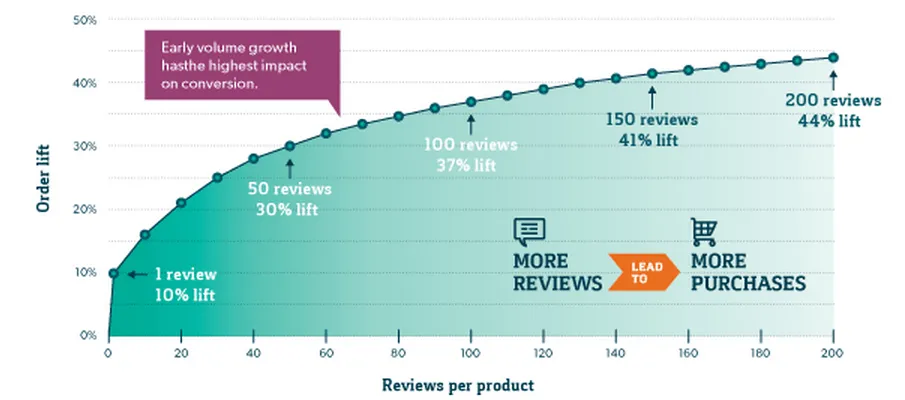Boost Your Online Sales: Top ecommerce Tips and Techniques for Success
Introduction: Unleashing the Potential of Online Selling
Let’s face it, ecommerce has revolutionized the way businesses connect with consumers. Ecommerce has emerged as a game-changer, offering unparalleled opportunities for growth and success, while presenting formidable challenges. For small businesses, competing with ecommerce giants like Amazon, Walmart, and eBay is a daunting task, but it is not an insurmountable one. To attract their target audience and thrive in this highly competitive arena, small businesses must embrace new methods and leverage modern tactics to level the playing field.
Like Mad Max using the bosun’s whistle to beat the bigger and undefeated Blaster in Beyond Thunderdome, small businesses must leverage their own resources to out maneuver larger corporations that simply throw money into campaigns to attract their customers.
As mammoth corporations dominate the online retail space, like Blaster dominated the Thunderdome, smaller enterprises must rely on their nimbleness, innovation, and a deep understanding of their niche market to stand out, like Max.
Gone are the days when traditional marketing alone could drive success; today’s world demands a strategic combination of optimized product listings, persuasive content, and personalized customer engagement.
In this comprehensive guide, we unveil the expert-approved tips and cutting-edge techniques that empower small businesses to compete head-to-head with industry giants. From harnessing the power of social media to implementing effective SEO strategies and building lasting customer relationships, this article equips ambitious entrepreneurs with actionable insights to thrive in the ever-evolving world of ecommerce. Embrace the challenge and unleash the potential of your small business in the vast digital marketplace.
Optimizing Product Listings and Descriptions: Captivate Your Customers
Creating Compelling and Informative Product Titles
Your product title is the first impression your potential customers get of your offering. Craft titles that are clear, concise, and keyword-rich, grabbing attention and communicating the core value proposition in a few words. Avoid stuffing keywords; instead, focus on readability and relevancy. A study by HubSpot found that product titles with more than 40 characters are more likely to rank higher in search engine results.
Writing Persuasive Product Descriptions that Highlight Benefits and Features
Effective product descriptions are more than just a laundry list of features; they tell a compelling story. Tap into the emotions and aspirations of your target audience by explaining how your product addresses their pain points and enhances their lives. Use descriptive language, bullet points, and formatting for easy readability. Ecommerce businesses that provide detailed product descriptions see a 30% increase in conversion rates. (Crazy Egg)
Utilizing High-Quality Images and Videos to Showcase Products
Visual appeal matters! Invest in high-resolution images and engaging videos that showcase your products from multiple angles. Offer customers an immersive experience, zooming in on product details, and demonstrating the product in action. High-quality visuals build trust and reduce hesitation. Shopify reports that products with high-quality images and videos have a 94% higher conversion rate compared to those without visual content.
Leveraging Social Media Strategies: Engaging Your Audience
Identifying the Right Social Media Platforms for Your Target Audience
Not all social media platforms are created equal, and your target audience may have preferences. Research where your potential customers spend their time and focus your efforts there. Whether it’s Instagram, Facebook, Pinterest, or LinkedIn, tailor your content to resonate with each platform’s unique style.
Follow the social media 80/20 rule: focus 80% of your social media content and messaging on engaging your audience. Focus the remaining 20% or your social media content and messaging on promoting your products features, benefits and solutions. Don’t oversell!

Social media users don’t log in to see several advertisements. They seek connection, entertainment, inspiration, and valuable information that enhances their lives. A report by Global Web Index reveals that the primary reason for using social media is to find “funny and entertaining” content, followed by the desire to “fill up spare time.” By delivering the content your audience craves, you give them a compelling reason to follow your brand. (source)
Building a Strong Social Media Presence and Brand Identity
Consistency is key to building a powerful brand presence on social media. Create a cohesive brand identity that reflects your values and personality. Use consistent logos, color schemes, and tone of voice across all platforms to foster recognition and build trust with your audience. Social Media Examiner states that 58% of marketers believe that social media has helped them boost sales.
Engaging with Customers and Using Social Proof to Boost Credibility
Social media is not just a one-way street; it’s an opportunity to engage with your customers directly. 71% of consumers who have had a positive experience with a brand on social media are likely to recommend it to others, as mentioned by Ambassador. Respond promptly to comments, messages, and reviews, showing that you value their feedback. Harness the power of social proof by showcasing customer reviews, testimonials, and user-generated content to build credibility.
Digital Buyers by Age Breakdown

Millennials make up the largest age bracket of online shoppers, followed closely by individuals between ages 35 and 44. (source)
Implementing Effective SEO Techniques: Dominating Search Rankings
Conducting Keyword Research and Optimizing Product Pages for Search Engines
Keyword research is the foundation of successful SEO. In fact, 93% of all online experiences begin with a search engine. (Search Engine Journal) Identify relevant keywords and phrases that align with your products and audience’s search intent. Incorporate these keywords naturally into your product titles, descriptions, and metadata, optimizing your pages for search engines.
Creating Valuable Content to Attract Organic Traffic and Establish Authority
Content is king, and quality content drives organic traffic. Start a blog and create helpful articles, guides, and how-to’s that address your customers’ pain points and interests. Valuable content establishes your authority in the industry, building trust and loyalty with your audience.
Building Quality Backlinks to Improve Search Engine Rankings
Backlinks from reputable websites are like votes of confidence for your content. Aim to secure backlinks from relevant, authoritative sources in your niche. You can achieve this through guest posting, partnerships, or creating exceptional content that others naturally want to link to. Backlinko reports that the first result on Google’s search page gets 31.7% of all clicks.
Streamlining the Checkout Process: Sealing the Deal
Simplifying the Checkout Process to Reduce Cart Abandonment Rates
A cumbersome checkout process is a significant culprit for cart abandonment. Minimize the steps required to complete a purchase, and enable guest checkout for customers who prefer a quick purchase without creating an account. Offer progress indicators to guide users through the process effortlessly. Baymard Institute’s research shows that the average cart abandonment rate is 69.57%.
Offering Multiple Payment Options and Ensuring Secure Transactions
Customers value flexibility in payment options. Alongside traditional methods, provide digital wallets, PayPal, and other convenient choices. Implement robust security measures and SSL encryption to reassure customers that their payment information is safe.
Providing Guest Checkout for a Seamless Buying Experience
Not all customers wish to create accounts. Offering a guest checkout option eliminates friction and speeds up the buying process. However, provide an option to save their information for future purchases to encourage them to return. A study by Statista reveals that 28% of online shoppers abandon their carts due to a complicated checkout process.
Projected U.S. Digital Buyers
Personalization and Customer Engagement: Building Lasting Relationships
Using Customer Data to Personalize Product Recommendations and Offers
Leverage the power of customer data to personalize your website’s shopping experience. Utilize browsing and purchase history to recommend relevant products, upselling or cross-selling items that align with their preferences. Epsilon found that 80% of consumers are more likely to make a purchase from a brand that offers personalized experiences.
Implementing Email Marketing Campaigns to Nurture Leads and Encourage Repeat Purchases
Email marketing remains one of the most effective ways to engage with customers. Create segmented email lists based on customer behavior and preferences. Send personalized offers, exclusive discounts, and product updates to nurture leads and foster repeat purchases. Campaign Monitor reports that personalized email campaigns receive 26% higher open rates compared to non-personalized ones.
Leveraging Chatbots and Live Chat to Provide Real-Time Customer Support
Today’s customers expect instant gratification and immediate support. Deploy chatbots or offer live chat options to answer customer queries and provide assistance 24/7. This personalized approach ensures a positive customer experience and increases the likelihood of making a sale.
- Conversational AI is responsible for a 67% increase in ecommerce sales.
- AI chatbots will account for $112 billion in retail sales by 2023.
- Retailers that utilize conversational commerce effectively are experiencing annual revenue growth between 7 to 25%. (source)
Mobile Optimization: Catering to On-the-Go Shoppers
OuterBox found that 79% of smartphone users have made a purchase online using their mobile devices in the last six months.
Google found that 61% of users are unlikely to return to a mobile site they had trouble accessing, and 40% will visit a competitor’s site instead. (source)
Ensuring a Mobile-Friendly Website Design for a Smooth User Experience
Mobile devices drive a significant portion of ecommerce traffic. Optimize your website for mobile devices, ensuring it loads quickly and offers a user-friendly interface. Implement responsive design elements to adapt seamlessly to various screen sizes.
Optimizing Product Pages and Checkout Process for Mobile Users
Mobile shoppers have unique needs and behaviors. Condense product information and ensure that the buying process is easy to navigate on smaller screens. Implement touch-friendly buttons and forms for a hassle-free checkout process.
Utilizing Mobile-Specific Marketing Strategies to Reach a Broader Audience
Mobile devices open new avenues for marketing. Capitalize on location-based marketing, push notifications, and SMS marketing to engage with your mobile audience effectively. Tailor your messaging to cater to the on-the-go lifestyle of mobile users.
Monitoring and Analyzing Performance: Making Data-Driven Decisions
Econsultancy reveals that companies that use data-driven insights are six times more likely to be profitable year-over-year. A 2022 study by Adobe found that companies using A/B testing see 20% more conversions on average.
Using Analytics Tools to Track Key Performance Metrics and Sales Data
Data is your greatest ally in ecommerce. Utilize analytics tools to monitor important metrics like website traffic, conversion rates, and sales performance. Identifying trends and patterns in the data can inform your decision-making process. Read how we use data to drive our decisions at Digital Consulting Services.
Identifying Areas for Improvement and Making Data-Driven Decisions
Regularly assess your performance metrics and identify areas that need improvement. Use A/B testing to experiment with different strategies and determine what resonates best with your audience. Making data-driven decisions helps you stay ahead of the competition.
A/B Testing to Optimize Website Elements and Marketing Strategies
A/B testing allows you to compare the effectiveness of different website elements, landing pages, and marketing strategies. Test variations of headlines, call-to-action buttons, and promotional offers to discover what drives higher conversions.
Building Trust and Credibility: Nurturing Customer Loyalty
BrightLocal’s research shows that 91% of consumers read online reviews before making a purchase decision.
In a survey by Salesforce, 74% of customers are more likely to switch brands if they find the purchasing process too difficult.
Displaying Customer Reviews and Testimonials to Build Trust
Customer reviews are a powerful tool to build trust and credibility. Display genuine customer feedback and ratings prominently on your website. Positive reviews reassure potential buyers about the quality and reliability of your products.
More Customer Reviews Lead to More Orders
No matter the industry, the the volume of reviews directly coorelates with the number of orders, even at the highest levels. The more customer reviews you have, the more orders you’ll receive, so ask your loyal customers to leave a review. Offer incentives for reviews and enlist a team of influencers to promote your products on social channels and to their followers. It works. (source)
Offering Guarantees and Clear Return Policies to Reduce Buyer Hesitation
Assuage buyer concerns by offering guarantees and transparent return policies. These assurances make customers feel secure in their purchase decision and remove any lingering doubts they may have.
Showcasing Industry Awards, Certifications, or Partnerships to Establish Credibility
Highlighting industry recognition, certifications, and partnerships adds credibility to your brand. If you’ve received accolades or formed partnerships with trusted organizations, make sure to showcase them on your website and social media platforms.
Conclusion: Unleash Your ecommerce Potential
Armed with these top ecommerce tips and techniques, you now possess the tools to elevate your online sales and thrive in the competitive digital world – and maybe even compete with the big boys. Remember the little things: embrace the power of optimization, personalization, and customer engagement to foster lasting relationships with your audience. Remember, building a successful ecommerce business requires continuous learning, adaptation, and innovation. Keep experimenting, analyzing data, and staying attuned to your customers’ evolving needs.
There are plenty of ideas out there and the beauty about digital is you can try things, monitor the data and tweak things according to the analytics. Take chances and enthuse your audience as you like to be enthused by the brands and products you buy. Keep in mind the buying habits and preferences of your friends and family. Ask them questions: why did you buy that? Why choose that brand or product over the other? More often than not, there’s a hidden gem of advice in their answer.
So as you embark on this exciting journey, know that you have the expertise and knowledge to unleash the true potential of your ecommerce venture. Have fun with it because it will show in your promotions and brand identity. It’s important to have fun these days. Happy selling!
About Us
Digital Consulting Services is a marketing consultancy firm that specializes in developing revenue-growing marketing programs including websites, SEO and increasing lead volume for small and medium sized businesses. We understand small business because we are a small business. We will take care of your marketing so you can take care of your business. Click here to learn more about us.
Unlike most marketing consulting firms, we are transparent and fully disclose our costs and your RETURN ON INVESTMENT. If we don’t deliver, you don’t pay – it’s that simple.
Consider me your on-call marketing help. Give me a call to see if I can help. You have nothing to lose.


